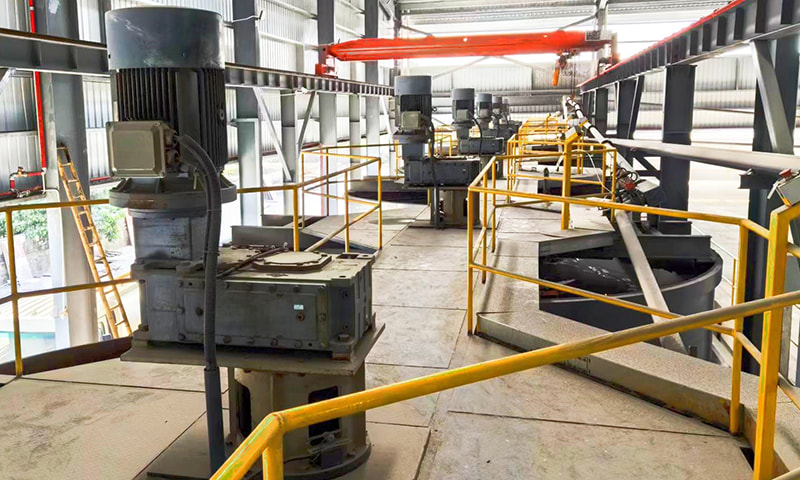The tank slope design of the slurry storage tank is an important line of defense to curb corrosion from the source. The slurry has complex composition and contains corrosive media such as acid and alkali substances, salts, and microorganisms. If it stays at the bottom of the tank for a long time, it will form a local high-concentration corrosion environment and accelerate the metal corrosion process. Reasonable tank slope design can break this static corrosion environment and allow the slurry to be discharged smoothly under the action of gravity. By accurately calculating the slope angle and combining the rheological properties of the slurry, it is ensured that there is no dead corner of liquid accumulation inside the tank. Even after the tank is emptied, the remaining small amount of slurry can slide down quickly along the slope to avoid local electrochemical corrosion and microbial corrosion caused by residual media.
Mechanical innovation to resist stress corrosion
The optimization of ribs and support structures is the core technology of slurry storage tanks to resist stress corrosion. In actual operation, the storage tank not only bears the static pressure of the slurry, but also produces complex stress distribution due to temperature changes and the filling and discharging process. If the tank body is unevenly stressed, it is very easy to cause stress concentration, which in turn leads to stress corrosion cracking. This kind of damage is often hidden and sudden. Through finite element analysis and other means, engineers optimize the layout, size and support structure of the reinforcement ribs so that the stress of the tank body can be evenly dispersed when it is under load. The reinforcement ribs enhance its overall rigidity, and the reasonable support structure ensures that the tank body remains stable under different working conditions and avoids additional stress due to deformation. The optimized mechanical structure significantly reduces the risk of stress corrosion, allowing the tank to maintain structural integrity during long-term operation and extend the effective life of the anti-corrosion system.
Fine control of filling corrosion loopholes
The weld is the weak link in the anti-corrosion system of the slurry storage tank, and its quality directly affects the anti-corrosion performance of the tank. Traditional manual welding is prone to defects such as pores, slag inclusions, and incomplete penetration. These microscopic gaps and unevenness will become a breakthrough for the corrosive medium and accelerate the corrosion process in the weld area. The use of automatic welding technology can form a uniform and dense weld by precisely controlling the welding current, speed and angle, reducing the occurrence of welding defects. After welding is completed, the weld is polished to eliminate surface protrusions and sharp edges, and reduce the possibility of medium adhesion and corrosion. On this basis, multiple layers of anti-corrosion paint are applied to isolate the weld from the corrosive medium by using the barrier effect of the paint layer. This kind of refined processing of the entire process from welding forming to surface protection effectively fills the anti-corrosion loopholes at the weld, improves the overall anti-corrosion performance of the storage tank, and ensures the safe operation of the storage tank under complex working conditions. The structural design builds an anti-corrosion barrier for the slurry storage tank through systematic optimization of the tank slope, reinforcement ribs and support structure, and weld treatment.
-
Purpose: The ball mill is the main equipment for grinding and mixing raw materia...
-
Purpose: Ball mill is the main equipment for grinding and mixing raw materials i...
-
Function: Use for storage slurry after ball mill or waste slurry Model: 8m³、10m³...






